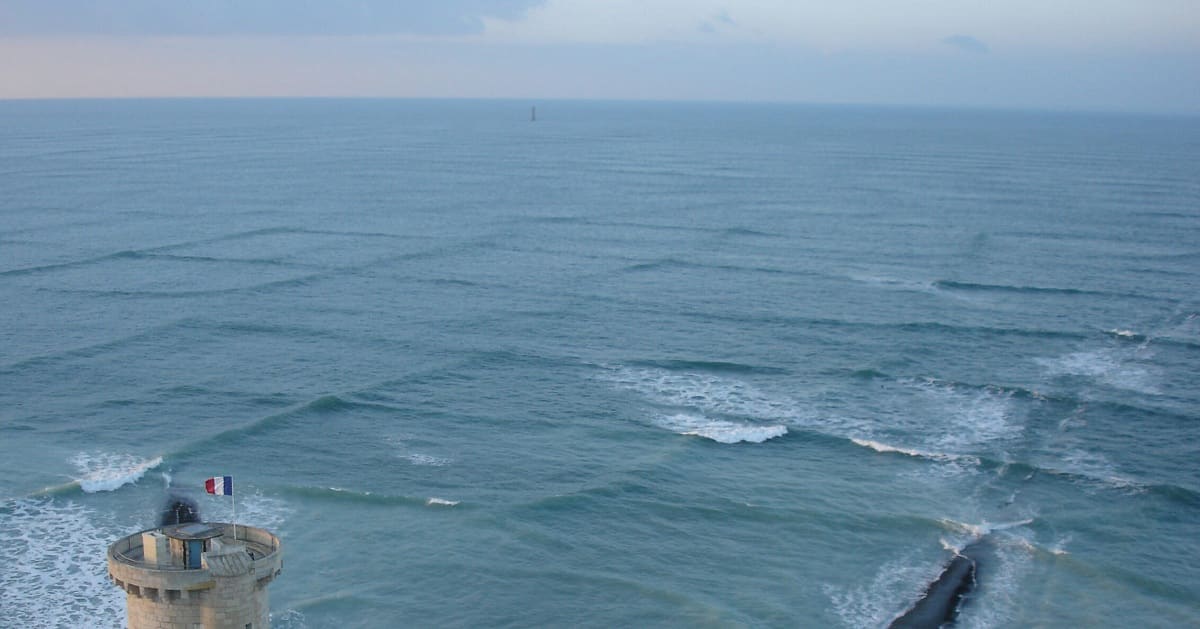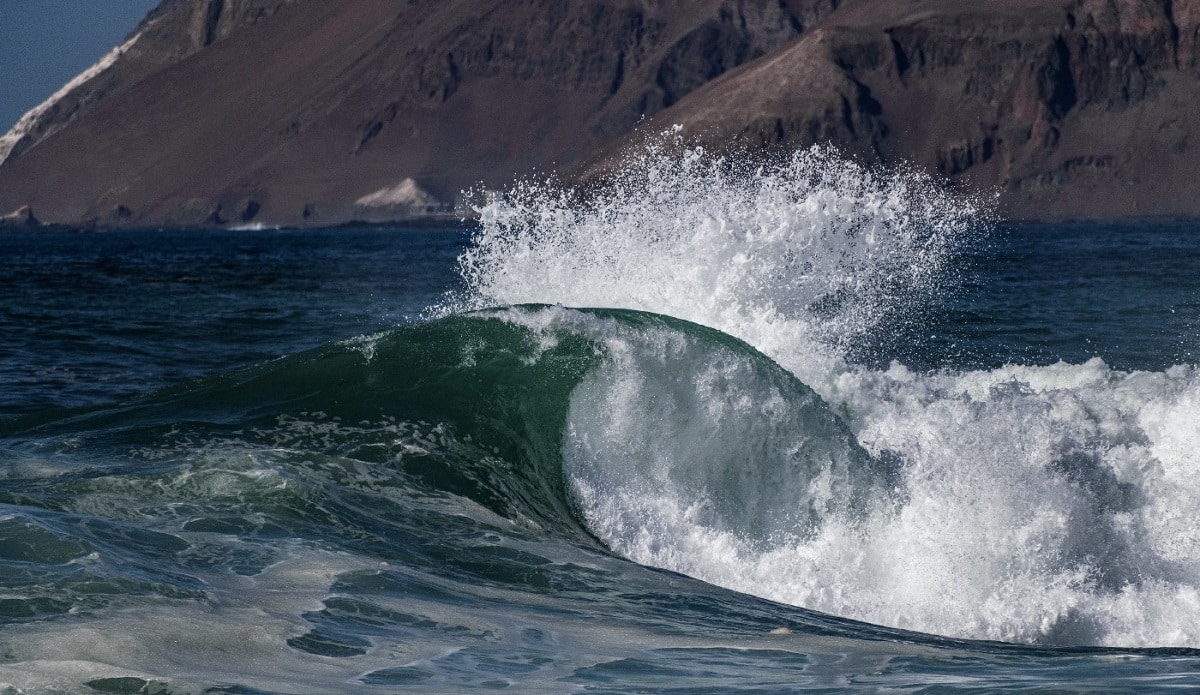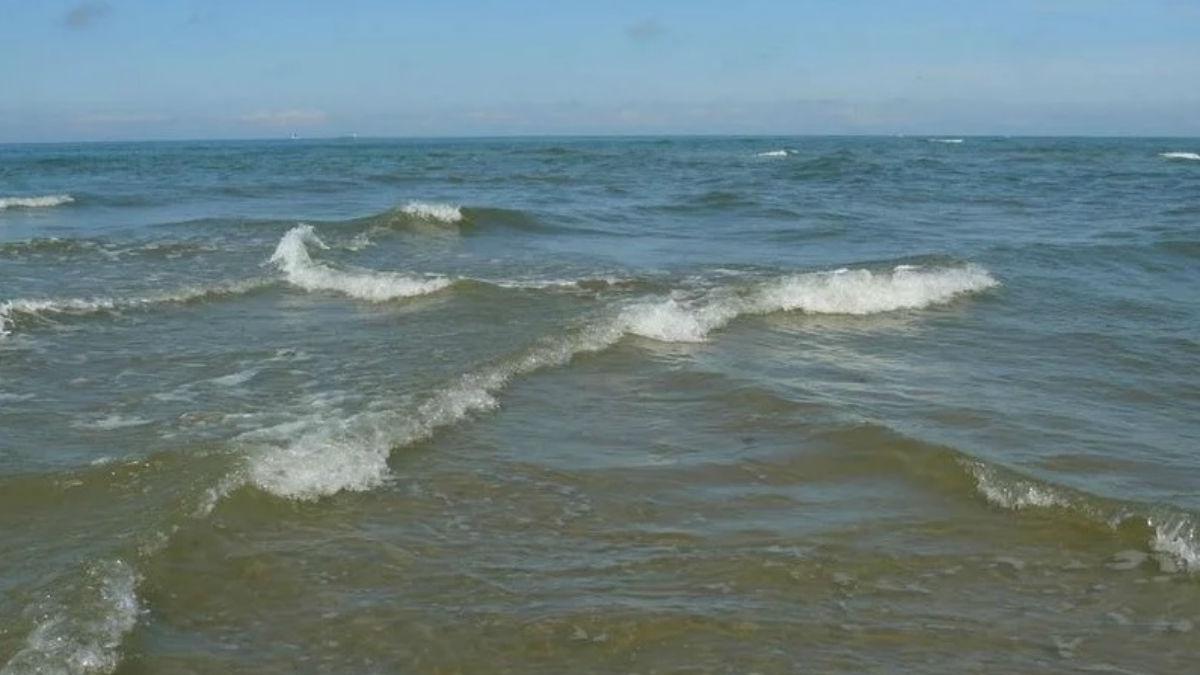
The seas present certain risks to people who swim into them. One of these risks is square waves. It is a phenomenon that, most of the time, cannot be seen on the surface, but it happens on the seabed. It does not usually cause problems unless they originate on the surface. In these cases, it can lead to death and generate a higher risk.
For this reason, we are going to dedicate this article to telling you what square waves are, what their origin is, consequences and how to avoid them.
What are square waves

A square wave, or also called "cross seas", It is a phenomenon that occurs when two ocean currents collide with each other at high speed and with great force.. In the sea, the waves are like a chessboard, as if they draw lines on the water.
These types of events occur in the depths of the ocean, so they are rare and their presence does not mean a problem. However, when this phenomenon occurs on the surface of the sea, it can cause serious problems and even death. Waves of this type are common on the Ile de Ré in France, where this "crossover" usually occurs. These marine phenomena are characterized by waves crashing into the water and forming squares.
On its website, the European Space Agency explains that:
“A sea state with two wave systems traveling at oblique angles is called a swell. Crossing sea state has become of particular interest in the ocean wave community. The conditions are quite common in the ocean and occur when a tide and a swell, or two swell systems, coexist.”
This is a fairly rare phenomenon that can form and dissipate in a matter of minutes, its formation depends on the weather patterns in the area, which causes waves to form at different angles, and when they collide, they create this grid pattern.
It also happens when the wind pulls the waves in one direction and the waves push them in the other direction. As far as scientists are concerned, they see this phenomenon as an example of the Kadomtsev-Petviashvili equation. This is a partial differential equation that describes nonlinear fluctuations, often used to explain the interactions of weather systems.
How they are formed

They are normal waves that form a grid on the sea as if it were a chessboard. These peculiar and rare waves are formed by the collision of two deep oceans thousands of meters deep, and other factors such as the wind cause the waves to travel so far that the surface of the sea looks strange.
As a result, these impacts form a diamond or square pattern that makes Ré one of the most incredible places in the world. Curiously, many people head to the island's lighthouse, built in 1854, to observe this incredible phenomenon. Although the square waves are beautiful, they are also quite dangerous, it is recommended not to swim in those places.
Dangerousness of square waves

When this phenomenon occurs, it attracts thousands of spectators due to its fascinating sight, however, experts warn that these waves are actually currents of water, so they can be dangerous for any boat or person in the water.
In the case of the Ile de Ré, several boats have been reported trapped by these currents, however, there have been incidents in other parts of the world due to the “square sea”, for which the authorities have issued an alert.
In this sense, experts have warned of its dangers and advised that if you see this phenomenon, it is best to avoid being in the sea at the time of the event to avoid an accident.
When weather conditions allow the phenomenon to persist longer, squares can be seen over the sea, but when this happens ships can get trapped. A 2004 study by Toffoli, collecting a series of data from Lloyds Marine Information Services between 1995 and 1999, revealed that a large percentage of ship accidents were caused by square waves.
Why should they be avoided?
We will start by quoting an excerpt from the book “The Science of Waves: Ripples, Tsunamis, and Stormy Oceans”:
"Two wave trains with similar wavelengths but crossing in different directions (cross seas) create an interference pattern that results in unusually high waves."
According to the study, the rate at which many ship accidents occur in the oceans is undergoing rapid temporal changes. Mainly in transoceanic conditions, or just after transoceanic, “when the waves and the sea breeze are almost aligned”.
In short, bathers and boaters do not fear these accidents for themselves, but for the possibility of being trapped in a patterned box. Therefore, lifeguards advise against entering the water to prevent this behavior. If you're already inside it is best to swim to shore as soon as possible.
Places where there are square waves
Square waves are the kind of waves you don't want to encounter when swimming or surfing. But surprisingly, several people still went to witness the rare event. Since these specific waves are the result of wave refraction and diffraction, they mostly occur in coastal areas or within small bays. The most famous place where these waves can be seen is the Ile de Ré. Nevertheless, you can't expect to see a square wave 100% of the time. If you want to witness these waves, you should first view the log to see when they are most likely to happen.
There are news and articles that claim that this small island of France is the only place where it crosses the ocean, however, this is completely false. You can also see these square waves in Tel Aviv and Lisbon in Portugal. In these places, tourists often fly drones over the sea or climb into lighthouses to get a bird's-eye view of the waves.
It's also possible that you've seen square waves near the shore and just didn't know it. Shallow square waves are safer because they carry less current.
I hope that with this information you can learn more about square waves, their characteristics and risks.
My positive satisfaction as always for such interesting topics. Greetings